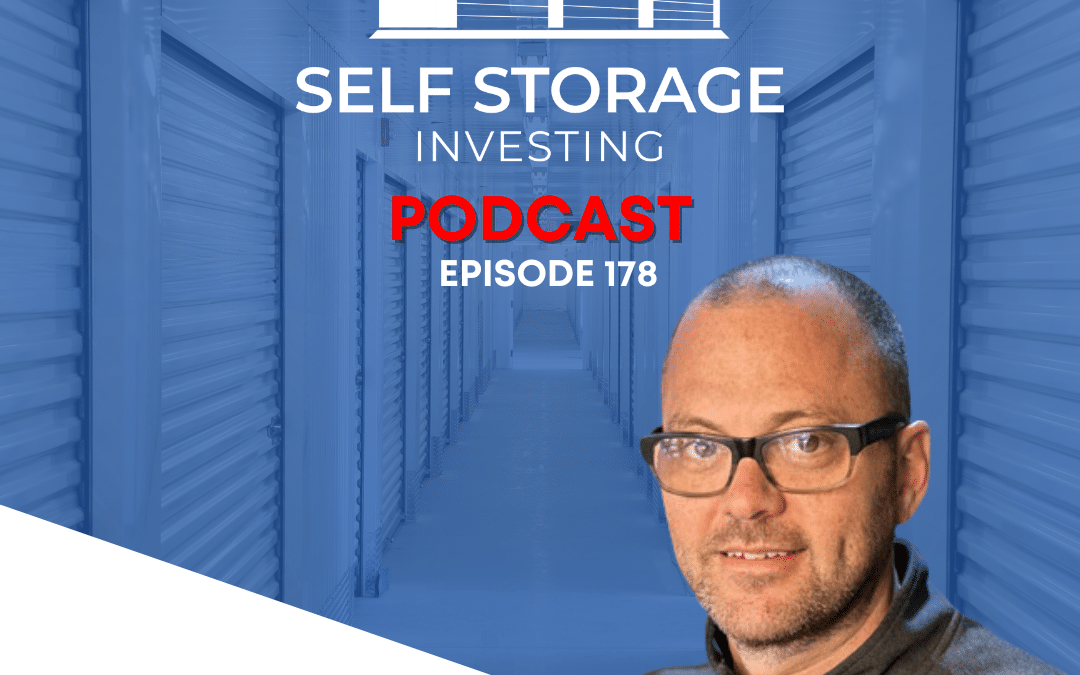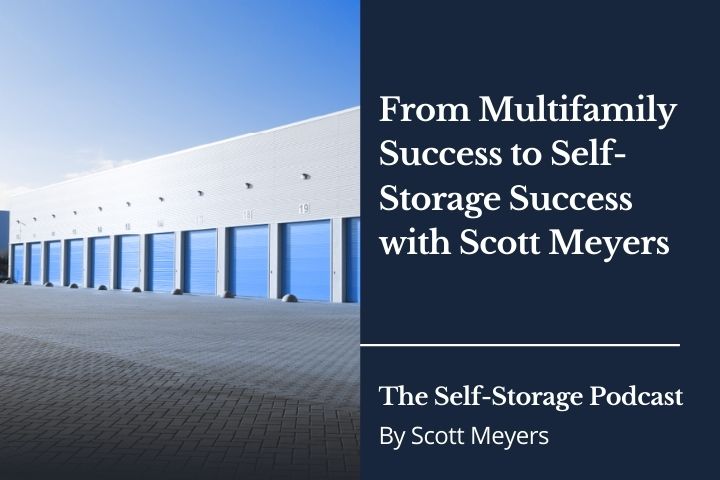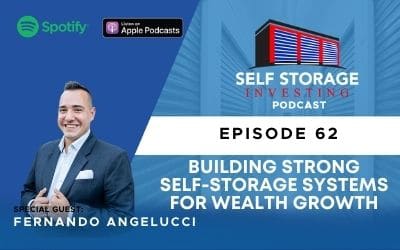The revisions to the SBA rules make it easier for borrowers to meet the 10% equity requirement for loans, allowing seller debt to count towards the full 10% equity injection.
Other changes include the acceptance of Home Equity Line of Credit (HELOC) or cash-out refinance of real property as equity, and the simplification of debt refinance.
And a newly implemented rule limits loan terms for partner buyouts to 10 years.
WHAT TO LISTEN FOR
5:18 Use of HELOC and Cash-out Refinance for Equity
6:30 Clarification of SBA 7(a) vs. 504 Loans
17:40 SBA’s New 10-year Loan Term Limit
26:21 REITs Management Approval
Leave a positive rating for this podcast with one click
CONNECT WITH GUEST ANNE MINO
Website | LinkedIn | Email
CONNECT WITH US
Website | You Tube | Facebook | X | LinkedIn | Instagram
Meet the software turning self-storage ads into occupancy boosters!
In this episode, Scott interviews Jason Zickler, co-founder of Adverank, about how their specialized software is changing paid advertising for self-storage operators.
Jason explains how Adverank’s innovative algorithm provides precise budget recommendations to maximize occupancy without overspending.
The discussion includes a live demo of the software, showcasing its real-time data integration with property management systems and Google Ads, and highlights successful case studies, including a remarkable turnaround for a struggling facility.
Listen For:
01:34 – Adverank Overview
14:12 – Adverank Demo
23:12 – PPC Ad Shortfall Explained
41:04 – Real-World Success Stories
CONNECT WITH GUEST: JASON ZICKLER
Website | Email | LinkedIn | 317-698-1309
CONNECT WITH US
Website | You Tube | Facebook | X | LinkedIn | Instagram
Follow so you never miss a NEW episode! Leave a rating and review on Apple or Spotify.
Episode Transcript
Jason Zickler (00:00):
We make a recommendation on what the budget should be. We try to help operators spend not a penny more than what they have to achieve whatever their occupancy goal is.
Announcer (00:15):
This is the Self- Storage Podcast where we share the knowledge and skills from the industry’s leading investors, developers, and operators to help you launch and grow your Self storage business. Your host, Scott Meyers, over the past 18 years has acquired, developed, converted and syndicated nearly 5 million square feet of self-storage nationwide with the help of his incredible team@selfstorageinvesting.com, who has helped thousands of people achieve greatness in Self-storage.
Scott Meyers (00:51):
Hello everyone, and welcome back to the Self-Storage Podcast. I’m your host at Scott Meyers and in today’s episode we have Jason Zickler with the Adverank. And we’re going to do something a little different today. We’re not going to only just talk about how their company is absolutely setting the self-storage world on fire with regards to paid ads, but we’re also going to do a demo. So if you’re listening to this on the podcast that you’re still going to be able to pull out all of the information, but we have a short little, maybe a seven to eight minute or so demo in which Jason’s going to go through what his product actually does. So it may be better at this point to go over or afterwards and watch us over on the self-storage investing channel as well. But with that, Jason, welcome to the show.
Jason Zickler (01:34):
Thanks a lot, Scott. I appreciate you having us.
Scott Meyers (01:37):
Well, I’ve been looking forward to this. You and I have been chatting quite a bit recently and especially in the recent weeks with regards to your offering and how we’re implementing that within our facilities as well. And so if you would take a minute and tell Storage Nation a little bit about Adverank and what you do.
Jason Zickler (01:55):
Well, thanks. So Adverank is laser focused on self-storage. So we are only available to self-storage operators and self-storage investors. And we focus on Google ad management and social media ad management. So think all things paid advertising for Google pay-per-click ads, account creation, account setup, and then we make recommendations on what you might want to do with your Google ad campaigns over time. And we also do that with social media. So we help operators and investors consider when they might want to run a social media paid advertising campaign. So we don’t do organic content or Google my business profiles or SEO. Everything we do is paid advertising for self-storage,
Scott Meyers (02:43):
So the niche within this niche of a self-storage and then also a niche within the advertising realm as well. And tell us a little bit about Jason, if you would tell us the origin story and how did this come about? A little bit about your background and how you came to find this niche within the self
Jason Zickler (02:58):
Storage business. Yeah, so back in 2018, we were introduced to our very first self-storage company and it was an operator and investor who had a portfolio of somewhere between 30 and 40 facilities that they were managing ad campaigns, pay-per-click advertising and using some of the liquidation websites that are available to self-storage operators. And they were on Site link and they had someone in-house that was helping with their paid advertising and they even had an outside vendor and they would meet once a month and they would review data that they were pulling from the sitelink consolidated management reports, and they would also review data that they would pull from their Google ad campaigns for all 30 or 40 of these facilities. And it was pretty cumbersome. They would have issues exporting the reports from their property management software. They would have some issues getting their internal or even vendor resource to pull the data from Google so they could make decisions on what they should be doing with each of these ad campaigns that was trying to drive occupancy at each of their self-storage facilities.
(04:09):
So we started helping this operator pulling this data in a manual fashion and putting it into a spreadsheet. So we would pull the Sitelink data and get it organized for each of their 30 or 40 facilities and we would pull the Google ad data related to their campaigns that they were running and we were trying to match it up to show the operator how they could try to make some decisions. They didn’t have to feel like they were always throwing darts or arm wrestling once a month when they would all get together. And a lot of times this was 8, 9, 10, 12 people that would get together to make these decisions. And so we were pulling this data in a very manual fashion and just putting it into a spreadsheet so we could start to create an algorithm to show what kind of calculations we could come up with that would be unique to each of the facilities related to the budget that should be allocated to drive occupancy.
(05:02):
We knew the operator had different occupancy targets and goals for each of their facilities. And so we took that into account. We knew the operator had some budget limitations, how much they wanted to spend on running Google pay-per-click ads. So we ended up creating this algorithm and we shared it with the operator and said we could probably do this on a weekly frequency so you could at least cut down these monthly meetings into something more of like a weekly nature and make decisions a little quicker. And the operator loved it and we started using this very manual spreadsheet process with this kind of proprietary algorithm we’d come up with. And we helped the operator grow from this 30 or 40 starting point to about 75 facilities, and we asked if they would like to be our first paying customer and subscribe each facility to our platform if we were able to deliver this information instead of a weekly basis on a daily basis and just have it in their inbox every single morning when they would wake up, they could get a rundown of now what was about 75 facilities and what adjustments they might want to consider to make with their pay-per-click advertising campaigns.
(06:12):
And they loved it. They became our first subscriber, our first paying customer to this kind of internal tool that we had built for them, and they continued to grow. They ended up growing to about 120 facilities and they were acquired and it was a great big disposition in the industry. It was very public and they were acquired up to a publicly traded REIT and a light bulb went off and we thought, we have to commercialize this product. We have to kind of make it a little more consumer friendly so people could actually access it and make some adjustments inside of a browser-based tool that would generate those emails that they could receive every day, giving a rundown of their portfolio, showing where they should consider making advertising adjustments. So we did that back at the beginning of 23 and we commercialized what we’ve been using for a few years, helping this one individual operator grow and ultimately to an exit.
(07:09):
And we went to market, we branded ourselves as Adverank. We made it available to self-storage operators all over the country and to investors. And like I said, we started at the beginning of 23, we started talking to operators at conferences and trade shows all over the country. And today we’ve ended up signing several hundred facilities all over the country. We’re in 31 states, we’re hoping to exit the year somewhere around a thousand facilities that are using Adverank to help with their pay-per-click and some social media advertising. And we plan to be in all 50 states. So things have been going very good. It’s a predictable, reliable way for operators to make quicker decisions and to kind of manage their advertising spend.
Scott Meyers (07:57):
Well, Jason, we know we’ve known for a number of years now that the war, if you will, or the battle between competing self-storage facilities is one online no longer long. Gone are the days of ads and yellow Pages are really print in almost any sort drive-by is important, but we all know that when somebody is looking for storage, they’re using a browser, whether it’s on a phone, iPad, desktop or what have you. And the person who shows up first and has a nice clean website which allows them to convert into either a reservation or a sale is going to win. And so you are right at the forefront and there have been some tools out there, but really not. I mean if you would break it down for maybe even the first time self-storage operator or somebody looking to get into the business, what has been available in the marketplace and then what is unique about advert rank and what you bring to the table?
Jason Zickler (08:58):
So we try to help operators and investors avoid four different key things. So if they’re trying to run their own ad campaigns inhouse, Google does a really nice job of making budget recommendations on how much you should be spending on your ad campaigns. And these recommendations are very high. They’re very self-serving to Google. Google’s design is to try to get as much money from advertisers as possible. And so Google constantly is making recommendations on what advertisers should spend. Well, with our algorithm, we’re able to make a recommendation up for your spend based on your occupancy goals for each facility and how much of a tolerance you actually have for budget, how much you want to spend. So we just take your target for occupancy and we take what the demand is in real time on Google when people are searching for storage near me and drive up access storage and climate control and boat and rv, all the keywords that apply to each individual unique property.
(09:57):
And we make a recommendation on what the budget should be. We try to help operators spend not a penny more than what they have to achieve whatever their occupancy goal is. And we can also help operators avoid using and just completely relying on some of the aggregator sites in the industry so they don’t just have to go to one of those liquidation websites or aggregator sites as the only means for driving occupancy. Our North star metric or key performance indicator, whatever you want to call it, is occupancy growth. And so we do that with using our algorithm and we do this with zero commission. And that’s probably the thing that makes us most unique is we want to make sure whatever the advertiser has set up, the self-storage operator has established, we want to make sure all their ad budget is going directly to the channel. So in this case with Google, it’s going directly to Google. We don’t take a commission or an admin fee or a cut or a percentage. We let all that money flow directly to Google. We just make a recommendation on exactly what that budget should be based on how many people in real time or searching for self-storage around each of the facilities. So that’s really what makes us most unique right now.
Scott Meyers (11:09):
So Jason, again, we obviously want to be found, and so for somebody who’s looking at and listening to this stuff for the first time or somebody who’s wanting to be found, you work with the folks at the facility level with regards to their website to make sure that they’re converting because it’s all about that. But then also from a property management standpoint and a facility management standpoint in terms of occupancy, then you’re also integrating with the property management system as well. So how do you integrate with all of those and how do you work with those applications? And then do you handle all of this stuff for your clients? Are you working with their IT folks in general or tell us what the relationship looks like with all of those systems?
Jason Zickler (11:51):
Yeah, so we integrate with all the big ones right now. So we have what is called an API direct access point. So for storage and for sitelink and for tenant for self-storage manager or SSM, we get a direct access point. So we can pull the data in real time every single day, all the things that are related to occupancy. So we’re going to pull data like move-ins and move outs and overall occupancy. We can pull total net revenue and daily vacancy cost. We can even pull tenant length of stay. We don’t pull any of the proprietary tenant personal private information. We’re just the entire portfolio, whether it’s a portfolio of one or a portfolio of 101, we with our API integration, we can just pull this data directly in from the facility management or property management software. So you can get a real nice display inside of our browser application called arant Cloud.
(12:48):
And we do the same with Google. We actually have an API into Google, so we can pull everything that’s going to help an operator or investor make some quick decisions every single day when they get an email from our application showing you what you should be doing related to your ad campaigns. So our name is Adverank. Our goal is to get self-storage operators websites ranked and listed in the first few positions on a search results page. So when someone goes to Google, when a potential tenant is going to Google and typing in self-storage near me, Google reserves the top key positions for sponsored or paid advertising. So we want to get your campaigns fully optimized so you’re showing up in those first few spots. Below that is usually the map where we can even, there are some advertising opportunities there too we can take advantage of. And then further down that search results page is where we’ll find the SEO and the organic content. That’s incredibly important too, but our philosophy is with paid advertising, which is what Google’s kind of built around, they’re going to reserve that top position, those top three positions for the paid advertisers. And that’s where we want to get our customers. We want to get ‘EM ranked at the tip top as much as we can by making quick campaign decisions every single day if they want.
Scott Meyers (14:12):
So how much more detailed do you care to go, Jason, in terms of obviously you’ve built an algorithm using ai, how does the algorithm in Arin provide recommendations to make advertising adjustments then for the facility operators?
Jason Zickler (14:30):
Well, this could be a good segue. I could show you a little demo of how we actually do this, what the application looks like, and some of the input points that operators can make adjustments around so they can get these personalized recommendations sent to their inbox every single day.
Scott Meyers (14:43):
Alright, fantastic. I’ll give you the control here and we’ll make it happen.
Jason Zickler (14:53):
Great. So what you are looking at now on the screen is our browser application. So you can access this where you have a web browser, you can access it on a smartphone, a tablet, a laptop, a desktop. Again, we’re integrating with your facility management or property management software to pull all this data in every single day. And we’re also integrating with Google. So when operators first log in, we show you what is called your entire portfolio view. So if you have one location or you have 101, we’re doing an average of what your overall occupancy is right now when you first log in, we also show you what your total net revenue is across your portfolio and we show you this little metric here called your portfolio opportunity cost. What this number represents is if we convert all your vacancy in your portfolio into occupancy, this is potential revenue that you would be able to generate from those new tenants.
(16:00):
So what we’re pulling to calculate this is your daily vacancy cost and your tenant length of stay across your portfolio and we just multiply those together. So this number is showing operators, if we fill up all those vacant units with new tenants and those tenants stay as long as your average tenants do, this is how much money you would be able to generate. So it’s a nice indicator right when operators first log in of this is the goal we’re trying to drive occupancy with advent here. So these other data points like in these graphs and charts, these are snapshots of what the occupancy has been over time. So you can kind of interact with the graphs and charts and scroll left to right and you can see what the occupancy trend has been over time. We want to see this going up and to the right, which would imply occupancy growth.
(16:49):
You can filter the data based on the last month so you can kind of get an idea of what the trend has been just most recently in the last 30 days or you can look at the last week to see what’s happened since Sunday of last week. Or you can look at the entire year and see what the trend has been. And again, pulling all the data we pull is related to occupancy. So things like move-ins. You can once again look at the move-ins on the graphs and charts and filter that data over the last week, month and year. You can look at move outs, you can look at your daily vacancy cost across your portfolio and we even throw in some very dashboardy like metrics. So you can see your top five move in facilities or you can look at your top five move out facilities.
(17:36):
And again, it’s all based on whatever date range you’re wanting to look at. We’re going to help you visualize right when you first log in the health of the portfolio. The power of Arin is when you click on adver rank in our menu system, we rank all your facilities in your portfolio. So for those that are watching on screen right now, you see a list of 12 facilities here and each facility is being color coded with a different recommendation that Adverank is calculating every single day. So some facilities will be recommended for a budget increase with their daily spend to run their Google ad camp. So we’ll show you what your current daily budget is, we’ll show you what your current occupancy is at each facility and we’ll show you what adverank is calculating as a potential budget increase for you to capture more tenants.
(18:28):
And we’ll do that for every facility in our rank or our list of your portfolio. We’ll even show you facilities where you might want to reduce your spend with Google to serve your ad campaigns. And there’s some different parameters that go into each of these and we can even calculate at times when you might want to consider doing more than just pay-per-click advertising. You might want to consider a social media ad campaign when these locations that get color coded in purple are considered to be stagnant. So we use a lot of AI to look at what’s been going on over the last six weeks as it relates to your occupancy growth. Even when you’re running pay-per-click ads. And we do a forecast of six weeks into the future and if it looks like your occupancy is going to stay 1% where it is right now, we call that stagnant.
(19:19):
So we’re flagging those locations and saying, well, you might want to consider doing something else besides just pay-per-click advertising. And what we have to offer is a social media 30 day campaign that can give these facilities a kick in the pants, can give them a boost to try to really try to start accelerating occupancy growth. And then we’ll identify all the locations that are considered to be what we call stabilized. That just means pay-per-click is working, you are getting occupancy growth. There’s no reason to spend more or reduce your spend or even consider social media. These locations are functioning as expected. So the list of all your locations in your portfolio, the product actually emails this to the operator or the investor. So before you even have to log into our application, you get this list in your inbox and it’s formatted and color coded, showing you which locations you might want to consider increasing your spend, which location might decrease, which locations you might consider social and which locations are performing as expected.
(20:26):
And in our application at any time, you can dive into all the details for just that facility. So you could look at the occupancy once again or you can look at some of the details that are driving this occupancy data. So you can look at your move-ins and your move outs and your daily vacancy costs and your length of stay. But what the power is and how our calculations work are really based on two points. We look at what is called an occupancy goal that you can set each facility with just a little sliding dial so you can slide it to 49%, you could slide it up to 70%, you could slide it up to 93% and Adrin is going to treat that like your target for this facility. We’re going to help you chase that occupancy goal and we’re going to watch some other data points that we pull from Google.
(21:20):
And the big one that we watch is what we call PPC shortfall. And so what PPC add shortfall is in this example I’m showing on screen here says 35.74%. So what this means for an operator is that in this example, the operator is missing out on about 35 or 36% of all the people right now on Google that are searching for those keywords like storage near me boat and RV storage, drive up access storage, climate controlled storage. And it’s telling the operator that right now at this facility you are limited by your budget to serve your ad campaigns with Google. So if you want to capture, there’s a lot of demand at this facility right now in real time within a mile or three miles or five miles outside the door of this facility, you might want to increase your spend to capture more of these leads.
(22:17):
So the leads and what we call converted leads, we are also showing those in our application. So operators can see in this example, we have 42 leads at this facility and a lead is a reservation to Avar rank. So these numbers match exactly what’s in your property management software, facility management software. So these leads are reservations, these are real people, converted leads are when they become paying tenants, hopefully on autopay we’re calculating your lead conversion percentage, which is an important indicator of the quality of these leads we’re getting. We can show your cost per lead, so you can always be doing an analysis of is this worth it? Should I continue with the pay-per-click campaigns? But again, that most important metric is what is called PPCA shortfall, which is an indicator of demand, how much demand there is around a facility.
Scott Meyers (23:12):
Jason for just a second, the PPC ad at shortfall, so what I default to is I’m assuming that this is geofencing. When you’re looking at searches online within a certain area, are you pulling that data in and that information in and how are you able to really determine that? I think most folks or want to understand, how do you know that? How do you know they’re searching and how do you know they’re searching at my site? What’s in the sausage? Tell us how you calculate that.
Jason Zickler (23:42):
Yeah, it’s a lot of the keyword phrases. So we have a methodology that we use, there’s a couple of different categories of keywords. We set up what are called standard keywords, so it’s all the hottest keyword phrases in the industry. So obviously self-storage near me and everything that might be related to that. So almost every one of our locations gets a collection of keyword phrases that we tuck into a lot of different ad groups. So we create these real tidy pay-per-click ad accounts. Again, they’re owned by the operator or the investor. We don’t put ’em in our name. Everything’s very transparent here at Adverank. And we also set up what is a lot of times called geotargeting. So we’ll set up a radius based on the uniqueness of the facility. So we’ll look at the market around it, see what the residential community looks like, or business community or student housing in the case if it’s near a college campus, whatever that might be.
(24:38):
And we adjust all those parameters. So when we look at PPC ad shortfall, we’re taking into account all those keyword phrases, all those configurations as well as the geotargeting for that unique facility. And that’s showing the operator how much search volume you’re missing in real time because of the impact your budget has on it. I mean, Google can only serve your ad campaigns based on how much you’re willing to pay per day to serve those ad campaigns. So we’re trying to help you understand if you want to capture more of that. It’s a supply and demand concept. We look at your supply levels or occupancy and we look at the demand in real time and we calculate the dollar amount that you might want to increase or decrease your spend based on what is happening around the facility. So that’s what PPC ad shortfall is.
(25:33):
It’s really that search volume that’s occurring. How many people in real time within a radius around your location are looking for self storage right now? So it’s a very quick way and when we talked about the origin story, the way they were doing it originally, and a lot of operators still do today, they have these budget discussions and these keyword discussions once a month at best, they have ’em once a week in some cases they don’t even have the discussions. They supply a budget to a vendor and the vendor will make the decisions on how much to spend and when to turn it up and down. And they’re in a lot of cases, they’re taking a commission or some sort of a fee for any of those adjustments that get made. So we’re trying to make sure we have an authentic calculation of what the budget should be because we don’t take a commission on how much the operator decides to spend.
(26:30):
If the operator wants to accept our recommendation, there’s a button in our application that’s called confirm advertising adjustment, and that’s all you have to do to accept that adjustment. Just click confirm and adverank takes care of the adjustment up or down. And we even have a button that says modify adjustment and the operator can put in any dollar amount they want. They could put in a dollar a day if they wanted and confirm that and adverank would adjust the spend all the way down to a dollar a day if you wanted to. So we’re trying to put the control of budget in the hands of the operator based on their goals for the facility with regards to occupancy and how much they want to spend and any other internal reasons that they might have to spend more spend less than what they’re currently spending. We just make it easy so you don’t have to pull data from a lot of sources. We can allow someone on a marketing team to just receive these emails every single day that give you a rundown of your portfolio and the individual can then make a quick decision with their thumb. You can get this on your phone and just click one, click adjust and adverank takes care of all the adjustments up and down and everyone can get on with their day and take care of other marketing and advertising tasks.
Scott Meyers (27:54):
Well, Jason, as we went through this the first time, my eyes aren’t as big as they were the first time you and I got on the screen together to look at this dashboard, but yet again, I’m just reminded as we discussed, not only to have this data, this isn’t just an improvement folks on what you’re currently doing because as Jason mentioned, and as I’m sure many of you are experiencing right now when you’re working with any ad provider, online ad provider, as Jason just mentioned, that he defined the relationship, which is they have a set of recommendation. They may or may not be familiar with our industry. They send the ad spend out there, recommended ad spend, and once again, Google is also going to provide the recommendations, but we know that Google is up to benefit Google, not necessarily the facility. And so this truly is the first time that we’ve had a tool, a vendor, somebody that is helping us to make a guided decision that can combat, or I shouldn’t say combat that is contrary to the folks that are looking to just extract more capital out of our facilities instead of really trying to maximize our ad spend because they don’t have a dog in the hunt, they don’t have a reason to.
(29:02):
All they’re doing is providing the dashboard. And I think it’s a beautiful thing also Jason, to see the opportunity cost because again, as you and I mentioned, we’re all owner operators and we’re looking at this day in and day out, although we haven’t been, just like you’ve mentioned, we haven’t been looking at certain keywords, we didn’t visit it to the degree that you do now with ADV rank and that we have the ability to do now, we make those the decisions and take a look at some of those keywords on a monthly basis and then we decide to how and where to make adjustments versus doing this daily. But when you open adv rank and look at the portfolio and the on a daily basis and you’re looking at your opportunity cost, one of the biggest challenges that I have in working also with and coaching and mentoring, so storage facility operators is whenever things get a little bit tight, everybody wants to decrease the marketing budget, decrease the advertising budget.
(29:59):
And it doesn’t matter what business you’re in, that is the worst decision and that is the last place you want to go. You need to tighten the belt to other places, but this is when you need to double down. But now instead of being afraid to do so or determining that this is the first place that we’re going to slash the budget, now we have an opportunity to see exactly how we can affect it if we need occupancy right now because we don’t think that we’re going to make it to the finish line in terms of a lease up or what have you. This is the information that we need to feel bold and confident enough to move forward in doing so and that we’re making the right decisions and now we’re going to reduce our expenses elsewhere, but certainly not in the marketing budget. This allows us to do a complete mind shift in how we face a lease up scenario or a turnaround scenario in any one of our facilities because now we finally have the data or darn close to almost the absolute data that we need to be able to go out and confidently attack the market.
Jason Zickler (30:50):
And we’re trying to make sure that the tool is not falling into the bucket of AI taking people’s jobs. We think the tool is just taking the grunt work off of people’s plates that there’s no reason for operators and investors to employ someone to spend time trying to pull consolidated management reports out of something like Sitelink or storage or SSM or whatever it might be, or even logging into Google and trying to remember their username and password. We’re trying to pull all that data, all that grunt work together, package it in an email, send it to someone who works for the operator or investor or the individual themself and let them make some quick decisions and as quick as clicking a button with your thumb and getting on with your day to some of the more important items and issues that you might want to accomplish in your market. So we just trying to save time, we’re trying to save money, save budget, and provide an alternative to always just relying on aggregator sites, which I think a lot of operators see as expensive and slightly frustrating from time to time.
Scott Meyers (32:01):
Jason, I also, as we looked at the dashboard, I wanted to take a peek if you would go back to, and folks if you’re not watching on the screen right now, I wanted to touch on conversions and you showed, and I know this is a hypothetical portfolio that we have here, but you showed a conversion of 40% I believe, and so this helps the lead conversions of 40.48%. And so what this tells me is that not only if you’re getting the leads and they’re coming in and you said that your new leads are folks that have reserved a unit and then the conversions are obviously they have rented a unit at 40% that’s about 20% below where we want to be. And so do you make recommendations to the facility owner or is it just as obvious as it is to me that is okay, we’ve got a conversion problem. And so either the person on the other end of the phone or at the site level is not doing their job, and we’re going to maybe take a pause here on the ad spend until we figure out why we’re not converting. Do you have those conversations? Is that something that you lean in and share with the facility operators or is it just the data that you’re sending across to them to make their own adjustments?
Jason Zickler (33:11):
Well, a little bit of both. I mean, a lot of our customers use the product very self-serving. So they see the data, they make the decisions, they use it every day. Our most successful operators are the ones that hit the button when these recommendations come in and they make the adjustments we are phrasing is hit the button and hit your goal. But like you said, some operators are growing in sophistication and they want see that lead conversion percentage increase. They want to see the quality of reservations that are taking place through advertising and other means when they convert into paying customers, they want to see that grow. So we’ve had some self-storage operators who want to experiment with social media advertising. That’s kind of a hot thing right now. And in some examples we’ve seen just on meta just so just on Facebook and Instagram, we’ve seen lead conversions up to 65 and getting darn near 70%, which is kind of a new metric that operators are starting to focus on.
(34:13):
They want to see if, do we get higher quality leads on meta? Do we get higher quality leads coming from Spotify or from Twitter or now X? So we’re starting to think about some additions that we’re going to be making to our product around attribution. Some of the stuff that a lot of everything in our product adverank cloud is based on what operators have told us that they want to see in the product. Everything from day one until today, all of our features and everything that’s on our roadmap is what operators say they want. And right now operators are telling us they want to start to look and see what of these reservations came from pay-per-click what came from SEO or Direct traffic, what’s coming from Meta, what’s coming from TikTok or X or whatever it might be, and what are the conversion ratios with those different channels so they can start reallocating their budgets for things that seem to be converting the quickest and the best.
(35:16):
And so that’s becoming an important part of our discussion. So a lot of the operators kind of self-serve use the product as it is out of the box. And in some cases we’re starting to provide some additional tracking capabilities where all of our campaigns can be appended with tracking codes. So we can send traffic to the operator’s website directly from Pay-per-click. And by working with the operator in some cases we can make sure that attribution data follows the new tenant all the way into the property management software. So the only grail we’re trying to help operators get to is a full lead to lease fully transparent view of what advertising is working and where you should be spending more money and where you might want to consider reducing spend. Again, our goal is to help operators spend not a penny more than they’re comfortable with to achieve whatever their goal is. So starting to work with some of the property management facility management software to make sure our tracking codes with our campaigns can appear inside of the facility management software. That’s number one on our roadmap right now. And we’re working with a lot of big platforms to make sure that can start to occur.
Scott Meyers (36:36):
Well, that adds another whole layer of information that we haven’t had at our disposal before because you can see by my question, my focus is conversions. And so no matter what the lead source is, I’m assuming that that’s a qualified lead and that my folks on the other end of the phone, the facility and or the website that’s just going to convert if somebody is going to be able to utilize our portal to reserve and or rent a unit online, I’m assuming there’s a problem there if it falls below 60%. But you being in this world on this side, you’re looking at the quality of the lead because as you just mentioned, there are folks in sources that we can pay for leads and pay for ads and that’s all they’re doing is just grabbing somebody to click and then they call it a lead. And if it’s somebody who’s not even looking to rent a unit, then that can affect it. And so now that we have this additional layer, not only are we tracking the quality of the leads, but then it brings a different conversation to our conversion metric as well. So I appreciate that. And looking forward to those pieces being added to the dashboard, are there any other upcoming features or updates that users can look forward to that maybe coming down the pike as well?
Jason Zickler (37:48):
Well, something that is used a lot that’s available today is when we do the social media advertising, we really try to restrict that to 30 days at a time so everybody can reevaluate what’s working on social. It’s an added expense for operators. So they typically don’t want to run paid social advertising 12 months a year. We try to do ’em in these one month boost periods. We actually call ’em social boosts to try to get an increase. And we use a lot of video every time we spin up one of our social media boosts or social media campaigns, we flood the social channels with video. We can run video on Spotify, on YouTube on meta, so Facebook and Instagram on X or formerly Twitter. And we’re seeing really high conversion rates with using video on social right now. So that’s something we encourage operators when our platform makes these recommendations for you to consider running paid social advertising, that’s something we really encourage operators to explore. You can set the budget for the 30 day campaign to anything you want, and we try to help our operator set that budget through our recommendations. And then we certainly want to see a lot of video use. So if the operator has interior photos, exterior photos, video testimonials, drone footage, we use all those assets when we set up one of these campaigns.
Scott Meyers (39:18):
Well, Jason, you shared in your origin story how you worked with that one operator and not only allowed them to maximize their occupancy but then grow to a sizable portfolio and then that exit profitably to a larger player. What some of the other folks that you’ve been working for, what are some other case studies or even just testimonials or some that you saw, success stories that have come out of some of the other folks that maybe had a handful of facilities or how you allowed them to grow to larger ones that you can point to since you’ve been out there working with an individual and smaller operators?
Jason Zickler (39:54):
Yeah, I can give you one example here. So we had one location with an operator who was in a six month decline. So this was a facility that was a joint venture between the operator and an outside investor. And for six months occupancy was dropping consistently month over month, over month over month. And so the investor in this property said, let’s do something different. Let’s do one of these social media campaigns. And the way they wanted to look at the return on the investment that was going to be made for these social media campaigns was going to be to look at lifetime value. They wanted to calculate what the lifetime value would be if we were able to achieve occupancy increase by running paid social advertising. So we set a budget of $2,000 to spend on social channels, so meta Twitter, Spotify, and YouTube and well, yeah, Twitter x now and after the six month decline that the property had been in in the first month, we saw a bump in occupancy and the operator in this joint venture decided to run the campaign for a second month.
(41:04):
So the total investment that the operator made was $4,000 in ad spend for 60 days to see if we could increase occupancy for the first time, and we were able to increase at 11.3% in that 60 day window. And for those that are watching on screen, this is the calculation that we use for calculating lifetime value. And the return was a quarter of a million dollars in lifetime value of that 11.3% increase in new tenants that started renting at this facility. So this was just a result of paid social advertising pay-per-click had been running the whole time. The facility was what we call stagnant. So that’s why we decided to push a social campaign for 30 days. And we ended up extending it for a second campaign for another 30 days total of 60. And they loved it. They said it was the highest jump in occupancy that they’ve ever seen in self storage. So not every facility would have results like that. Advertising works, whether it’s on pay-per-click or on social, you have to set the creative up, you have to set all the keywords up if it’s pay per click. But that’s what we’ve been doing since 20 17, 20 18. So we’ve kind of got our arms around that part and we just like to dial everything in for each facility uniquely and see if we can have some kind of results that are similar in nature.
Scott Meyers (42:29):
Well, and as you mentioned, there’s a set of facilities. Well, each facility is different in nature. It can be different in their offerings from a boat and RV to any other ancillary income streams or just a convenient to X, y, and Z business that is down the road and letting folks know where they are. And here’s another lesson for you, storage Nation for I hear this conversation, I’ve heard this said a lot because we’ve had many of these conversations and that is many self-storage facility owners and operators out there say, well, why would I advertise on social media? My facility doesn’t have a social life, and who’s going to want to be looking? But you understand that what YouTube is the second largest search engine, and there are reels and videos that show up on YouTube that point back to Facebook, and most folks are on it as well as the rest of the socials that Jason just mentioned.
(43:14):
And so it is all about exposure. It’s all about rankings and getting the Google Juice, the mojo that puts you up a little bit higher in the rankings that feeds the algorithm. So it all continues to work even if it isn’t a direct response, which most of this is as Jason is mentioning, but it is getting more exposure for your four year facility that allows it to continue to jump up in the rankings. And so social is a place to be marketing, and that is a absolutely glowing example, Jason, of what it looks like if you just with a minor ad spend can get some more exposure for your facility.
Jason Zickler (43:48):
That’s right. And all the assets we end up creating all these videos. We do four different aspect ratios of each video. So we do 16 by nines and nine by sixteens and one by ones or the square video ads you see a lot. We do four by fives and all that content we give to the operators, all the display ads, all the carousel ads, all the stories and reels, all that stuff that goes into those 30 day campaigns, the operator can reuse all that content as well. So all that can live on a website, it can go out in a mass email, there’s no additional charge for that. It could go and be used to populate a timeline or a social media profile that might’ve been dormant or stagnant for a while. So while we don’t do those services of placing all that content, we hand it all over by sharing a Dropbox folder and the operator can find all these alternative uses and placements for that material.
Scott Meyers (44:47):
Well, Storage Nation, I can attest to this as Jason and I, if you’ve been following Adverank at all, you recognize that their graphics and their marketing materials are the best, not only in our industry, but I would say just about the best anywhere. And that’s what they’re showing for our facilities as well. And so the fact that we get to keep that is they have some incredibly creative folks at the forefront of the ads that they create and they do get attention. And so Jason, we touched on a few areas and a few things that are coming down the pike, and we’re very thankful that you’re looking to the owner operators to continue to give you information and put the questions out there or wave the magic wand and say, okay, here’s the things that I’d like to see in my dashboard and implementing those as well. But how else do you see Adverank evolving in the next few years and what impact do you hope we will see overall in the self-storage industry?
Jason Zickler (45:38):
Well, I think attribution is kind something that’s missing in the self-storage industry. Attribution, being able to attribute your spend and your efforts when you run an ad campaign to success so you can continue to make decisions on what’s working and what’s not. We want to see tighter partnerships with vendors, the property management software vendors to allow advertisers like Adverank to be able to send our tracking codes and get ’em stored in the property management software. So operators can make those decisions very quickly on how many tenants this month have come from Facebook versus pay-per-click versus SEO and so on and so forth. So that’s really going to be a big focus for us. And we also want to see some direct tie-ins with revenue management that you can make some revenue management decisions, whether it’s rate increases or things like that. What kind of offers are the most attractive or getting the most quality tenants. We want to see all that of starting to get married up together so everybody in the industry can start benefiting from knowing what’s working and what’s not in markets at different times.
Scott Meyers (46:48):
So
Jason Zickler (46:48):
That’s our roadmap, that’s our plan for the future.
Scott Meyers (46:51):
Well, the power’s in the data and if you have the scoreboard or the dashboard that tells us where we’re at and compared to where we need to go, and then now to be able to see what the opportunity is out there that allows us to pull some different levers and make different decisions at the C-suite level. So we all appreciate you, all of us in the industry, Jason, for putting this all together, and I’m really thankful for this data that we’re going to have available to us now. So Jason, I wish we had more time. We’ll definitely have to have you back in episode number two, especially once we have some of these other additions to the software made and maybe some additional case studies as well. But for now, what are, I would say, some of the mistakes that you see people making with regards to not taking a look at the data and not taking really a good hard look at their ad spend right now that maybe some gotcha, some blind spots, some pitfalls that you see people falling into that maybe you would give them some advice or sharing some experience on how they could maybe look at this thing a little bit differently.
Jason Zickler (47:47):
Well, I think just getting started is probably the most important thing. I think operators have access to creating and setting up their own Google ad accounts. There’s setting up your own social media accounts using the ad managers. I think just getting familiar with what it takes to set up some of these ad campaigns on Google and on social media. It’s well worth your time to experiment with that and see if you can achieve some results. And when you get to a point and it’s becoming frustrating and you need help with the creative or you need help pulling the data together in a meaningful way so you can make quicker decisions, that’s usually when people turn to AdRank. So we do have customers who come to us who have never ran a Google ad campaign, and we can help set that all up for ’em, but we set all these accounts up in their name so everything is owned by them.
(48:39):
And if down the road they end up wanting to part ways with AdRank, there’s no cancellation fees, you’re able to internalize that if you bring someone on and you want them to take it over or you want even use another vendor. We just encourage people to not be afraid of running ads, ads work. It works in every industry, whether it’s on pay per click or social. And we just, we’d like to see people give it a shot and see what they find out, and then they get to a point and want additional help. That’s where we jump in and provide a little more clarity on how it all works.
Scott Meyers (49:11):
Fantastic. Well Jason, obviously we love it. We are 100% on board. So how do people get in touch with you if they want to do a deeper dive or even one of your killer demos?
Jason Zickler (49:21):
Yeah, I think the first thing people should do is just visit adv rank.com. We have our pricing on our website. We have some examples. We have lots of eBooks and videos and smattered all over the website is a little button that says Schedule a demo or book a demo or get in touch depending on where you are. And you can just book a 1530 or even a 60 minute demo and we’ll be glad to jump on and walk through the product, answer questions, look at your website and talk about how we can help. So
Scott Meyers (49:54):
Jason, once again, thanks so much for your time. I appreciate it so much. Looking forward to rolling this out throughout our portfolio and having you live at our mastermind for that special presentation. And so as we wrap up for today, what would you say has been maybe the best advice that anyone has ever given you throughout the years?
Jason Zickler (50:09):
The best advice that’s been given to me is listen to your customers and build exactly what they want. And that is our mantra with the product, with the creative services that we provide is it all comes from our customers. So if you’re using Avera or considering it and you have ideas of what would make it better, we listen to everything operators tell us and that’s what we build. So that’s kind of our mantra here at Avera is build for the customer.
Scott Meyers (50:41):
And appreciate that. We’ve seen many businesses go by the wayside because they thought they knew more than their customers and many of those companies aren’t around. So Jason, it’s been great having you on the podcast Storage Nation. If this has not been on your radar, it needs to be right now. And if this has been on your radar, you need to implement it right away. So the information, Jason’s contact information will be included in the show notes. He gave it to you here as well. And so with that, Jason, thanks once again for your time. Looking forward to seeing you again very soon.
Jason Zickler (51:09):
Alright, thanks a lot Scott. I appreciate it very much.
Scott Meyers (51:12):
Alright, take care everyone.
Announcer (51:18):
Hey gang. Wait three things before you leave. First, don’t forget to follow the Self – Storage Podcast and turn on your notification so you never miss another episode. And while you’re there, please leave us a five star review if you like the show. Second, be sure to share your favorite episodes and more via Instagram and don’t forget to tag us. And lastly, head to the links in the show description and hit follow on Twitter and Facebook to get a front row seat as we grow and scale our business and bring you along with us.
















